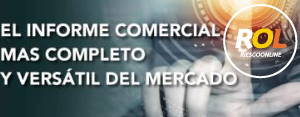Para mejor apreciación, Total News Agency entrega las versiones en Castellano e Inglés y el hilo de X donde dio inicio el debate con importantes miembros del partido Republicano y funcionarios parlamentarios. No cuesta mucho imaginar que sucedería si esto se tornara en realidad, amén de la inmediata oportunidad que se le abriria a China y el escaso tiempo que le tomaría ocupar lugares, principalmente en Latinoamérica y África.
El documento aborda la propuesta de aplicar el método DOGE (Descentralización, Optimización, Gobernanza y Eficiencia) al Banco Mundial y otras instituciones multilaterales de desarrollo (BMD), argumentando que estas organizaciones han fracasado en sus misiones originales y representan una carga financiera para los contribuyentes estadounidenses. A continuación, los puntos más destacados: Cifras según usanza en EEUU
- Fracaso de los bancos multilaterales de desarrollo (BMD): Se critica al Banco Mundial y sus instituciones hermanas por su ineficiencia, burocracia excesiva y objetivos en constante evolución que no han logrado resultados significativos en sus 80 años de existencia. Se les acusa de priorizar agendas como el Green New Deal y la Diversidad, Equidad e Inclusión (DEI) sin beneficios tangibles.
- Propuesta de retirada de EE.UU.: Se sugiere que Estados Unidos abandone el Banco Mundial y otros BMD, lo que permitiría recuperar más de 70.000 millones de dólares en aportaciones y reducir la carga fiscal. El proceso incluiría una enmienda legislativa para eliminar la membresía de EE.UU. y la devolución de los fondos aportados.
- Críticas a la administración de fondos: Se destaca cómo el Banco Mundial utiliza “capital exigible” para financiarse, generando un pasivo contingente de 53.000 millones de dólares para los contribuyentes estadounidenses. Además, se cuestiona la calificación AAA de los bonos del Banco Mundial, sugiriendo que no deberían recibir el mismo trato que los bonos gubernamentales.
- Beneficios fiscales y privilegios: El documento denuncia los privilegios fiscales de los empleados del Banco Mundial y la exención de impuestos sobre las propiedades de la institución, lo que genera desigualdad respecto a los contribuyentes estadounidenses.
- Reformas propuestas: Entre las acciones sugeridas están:
- Eliminar el estatus fiscal privilegiado del Banco Mundial y sus empleados.
- Prohibir la financiación a entidades chinas, especialmente a gobiernos locales y vehículos de financiación.
- Suspender la exención de los bonos del Banco Mundial en los mercados estadounidenses.
- Rescindir asignaciones no utilizadas y limitar compromisos futuros de capital exigible.
- Impacto político: Se critica a administraciones previas, incluidas las de Reagan y Trump, por apoyar la expansión del Banco Mundial pese a su ineficiencia. También se señala a la administración Biden por continuar financiando estas instituciones.
En resumen, el documento propone una retirada estratégica de EE.UU. del Banco Mundial y otras BMD, argumentando que estas instituciones son ineficaces, costosas y representan un riesgo financiero para los contribuyentes estadounidenses.
Todo comienza cuando el miembro del grupo DOGE @SenLummis expone el gasto derrochador de la administración Biden:
4,5 dólares para combatir la desinformación en Kazajstán.
20 millones de dólares para Barrio Sésamo en Irak.
25 millones de dólares para promover el transporte verde en Georgia.
8 millones de dólares para enseñar a los periodistas de Sri Lanka cómo evitar ….
https://t.co/dkYqLCo08U
( https://x.com/SteveGuest/status/1887579662999585178?t=fkiuXIw9SuKgY_w_O72EHQ&s=03 )
Cómo ELUDIR al Banco Mundial: Una Guía Práctica–
Por Joe Rogers- Ex Embajador ante el Banco Asiático de Desarrollo, director ejecutivo de la Conferencia Republicana de la Cámara de Representantes y jefe de Gabinete de del congresista Jack Kemp.
De todos los objetivos posibles de ELUDIR, ninguno debería ser más sencillo que las instituciones masivas de transferencia de riqueza como el Grupo del Banco Mundial y sus bancos multilaterales de desarrollo (BMD) hermanos.
El punto clave
Los estatutos de organización de cada una de estas instituciones permiten la salida de los miembros. En caso de que un miembro decida retirarse, se le devuelve su dinero. Estados Unidos ha donado más de 70 mil millones de dólares a estas instituciones mediante asignaciones y gastos. Retirarse de todas ellas devolvería enormes sumas al Tesoro de Estados Unidos, permitiendo espacio para los recortes fiscales del presidente Trump.
Un segundo punto importante
Los BMD han fracasado en todos los aspectos de sus misiones, que constantemente evolucionan. El Banco Mundial ha existido por más de 80 años. El presidente del Banco Mundial, Ajay Banga –nombrado por Biden– lo dejó claro en el Informe Anual del Banco Mundial en 2024:
“Rara vez en nuestra historia de 80 años nuestro trabajo ha sido más urgente: enfrentamos un progreso decreciente en nuestra lucha contra la pobreza, una crisis climática existencial, una deuda pública creciente, inseguridad alimentaria, una recuperación desigual de la pandemia y los efectos de los conflictos geopolíticos”.
Después de 80 años, tienen “progreso decreciente”. Solo necesitan más de lo que Margaret Thatcher llamó “el dinero de otras personas”. ¿No es esto una definición de fracaso?
Los bancos multilaterales de desarrollo han crecido rápidamente mientras fracasan en sus misiones, dejando solo burocracias extensas y libres de impuestos que apenas rozan el comercio y desarrollo internacionales, con poca supervisión y políticas decididamente destructivas. Por suerte para la economía mundial, sus políticas son secundarias en comparación con los intereses de su liderazgo y personal: seguridad laboral y expansión.
Prioridad: Retirada del Grupo del Banco Mundial
La retirada del Grupo del Banco Mundial y de otros bancos multilaterales de desarrollo debería ser una prioridad en el marco de reconciliación y el “gran y hermoso proyecto de ley”. Aunque estas organizaciones son un desafío para ELUDIR, tienen vulnerabilidades que podrían interesar a figuras como Elon Musk y Vivek Ramaswamy, quienes parecen disfrutar los retos.
Esta guía ofrece un plan sobre estas vulnerabilidades y cómo atacarlas, centrándose en el brazo principal de préstamos del Grupo del Banco Mundial, el Banco Internacional de Reconstrucción y Fomento (BIRF), aunque los principios se aplican a todo el complejo de instituciones similares.
Un poco de historia
El Banco Internacional de Reconstrucción y Fomento (BIRF) nació como parte de los Acuerdos de Bretton Woods en 1944. Como su nombre indica, su propósito era proporcionar capital para reconstruir el mundo devastado, particularmente Europa, tras la Segunda Guerra Mundial, mientras las instituciones se restablecían y los flujos de capital comercial se reanudaban. Esa misión, evidentemente, hace tiempo que dejó de ser necesaria.
Como cualquier entidad burocrática que se respete, el BIRF ha ampliado su misión de manera desmesurada. De refinanciar Europa, su “misión” se ha globalizado, incluso cuando sus consejos políticos y proyectos fracasan de manera casi cómica.
Para empeorar las cosas, ahora está completamente enfocado en proyectos globales del Green New Deal y en incorporar DEI (Diversidad, Equidad e Inclusión) en todos sus proyectos, con un riesgo financiero cada vez mayor para los contribuyentes estadounidenses.
Administraciones y Congresos de EE. UU. sucesivos han sido cómplices al permitir, e incluso fomentar, la existencia y expansión del BIRF a pesar de todas las evidencias de sus fracasos y posiciones antiestadounidenses. Notablemente, las administraciones de Reagan y Trump no solo no lograron reformas sustanciales en el BIRF, sino que incluso abogaron por su expansión.
Reconciliación: Un gran y hermoso proyecto de ley
La forma más directa y beneficiosa de retirarse del BIRF es incluir un lenguaje en el próximo proyecto de ley de reconciliación que enmiende la Sección 2 de la Ley de los Acuerdos de Bretton Woods para eliminar la autorización de que EE. UU. acepte membresía en el banco. Esto desencadenaría una acción presidencial para retirar a EE. UU. de la membresía.
La terminación de la membresía, bajo los acuerdos de Bretton Woods, resulta en la devolución de todos los fondos aportados al BIRF y elimina al exmiembro de cualquier responsabilidad por futuros préstamos del BIRF. Para el BIRF, esto equivaldría a unos 3.7 mil millones de dólares. Retirarse de todos los BMD devolvería más de 70 mil millones de dólares a los contribuyentes estadounidenses.
El lenguaje legislativo para retirar a EE. UU. del BIRF –o de cualquier banco multilateral de desarrollo– puede incluirse en el “gran y hermoso” proyecto de ley de reconciliación. Normalmente, la Regla Byrd en el Senado impediría tal lenguaje. Sin embargo, dado que retirarse de estos bancos de ayuda extranjera resulta en la devolución de contribuciones de EE. UU., no es “extráneo” a las instrucciones del comité de jurisdicción. Tiene un impacto directo en el presupuesto bajo consideración.
Otras líneas de ataque
Habrá una oposición severa a la retirada del BIRF. Aunque casi nadie en Estados Unidos ha oído hablar de él, tiene muchos partidarios en Washington y entre aquellos que se benefician de su generosidad. Entre ellos se encuentran los grandes bancos que se lucran del financiamiento de bonos del BIRF. También se puede esperar una oposición vociferante de los Departamentos del Tesoro y de Estado, donde las burocracias dependen del BIRF para sus empleos. Los nombramientos políticos que no hayan sido debidamente evaluados probablemente liderarán la oposición.
Algunas acciones adicionales que el Presidente y el Congreso pueden tomar para poner fin a la financiación adicional y reducir la exposición a pasivos no financiados mientras avanza el proceso de retirada incluyen:
- Emitir una Orden Ejecutiva que instruya al Secretario del Tesoro a notificar al BIRF la retirada de EE. UU. de su membresía.
- Excluir cualquier solicitud de financiamiento para el BIRF en el presupuesto presidencial.
- Incluir una rescisión de todas las asignaciones no gastadas para el BIRF, incluidas las asignaciones de “capital exigible”.
- Clarificar que cualquier llamado al capital exigible por parte de EE. UU. estaría sujeto a una nueva asignación por parte del Congreso y no constituye una garantía de plena fe y crédito.
- Suspender el estatus de exención de valores para los bonos del BIRF, sometiéndolos al mismo tratamiento que cualquier otro bono en los mercados estadounidenses.
Conclusión
Esperemos que esta guía estimule a ELUDIR a tomar medidas contra los BMD, terminar con la transferencia masiva de riqueza de los contribuyentes estadounidenses a organizaciones financieras internacionales y burócratas, y redirigir unos 70 mil millones de dólares en apoyo a la continuación de las reducciones fiscales de 2017.
Versión original en inglés
How to DOGE The World Bank: A Primer
Of all DOGE targets, none should be easier than the massive wealth transfer institutions of The World Bank Group and its sister multilateral development banks (MDBs).1
Let’s get the important issue up front. The articles of organization of each of these organizations provide for members leaving. In the case of a member leaving, they get their money back. The U.S. has more than $70 billion in appropriated and expended donations to these institutions. Withdrawing from all of them would return to the U.S. Treasury vast sums to make room for President Trump’s tax cuts.2
A second important issue to clarify is the fact that the MDBs have failed at all aspects of their ever evolving missions. The World Bank has existed for over 80 years. World Bank President Ajay Banga – a Biden appointee – stated it clearly in the World Bank Annual Report in 2024:
Rarely in our 80-year history has our work been more urgent: We face declining progress in our fight against poverty, an existential climate crisis, mounting public debt, food insecurity, an unequal pandemic recovery, and the effects of geopolitical conflict.
After 80 years, they have “declining progress”. They just need more of, as Margaret Thatcher termed it, “other people’s money”. Is this not a definition of failure?
Multilateral development banks have grown rapidly while failing at their ever evolving missions, leaving nothing but sprawling, tax-free bureaucracies to nibble at the edges of international trade and development with little oversight and decidedly destructive policy prescriptions. Luckily for the world economy, their policy prescriptions are secondary issues to their leadership and staff. Their interests are simple job security and expansion.
Withdrawal from the World Bank Group and the other multilateral development banks should be a priority for reconciliation and the “one big beautiful bill”.
The staying power of these organizations show that they will be a challenge for DOGE. However, they have vulnerabilities which should intrigue Mssrs. Musk and Ramaswamy who seem to enjoy a challenge.
This document offers a roadmap of these vulnerabilities and how to attack them. It focuses on the World Bank Group’s main lending arm, the International Bank for Reconstructions and Development, but the principles apply to the entire complex of such institutions.
A Bit of History
The International Bank for Reconstruction and Development Bank began as part of the Bretton Woods Agreements in 1944.3 As its name implies, its purpose was to provide capital to rebuild the ravaged world, particularly Europe, following WWII while institutions were rebuilt and commercial capital flows resumed. That mission, as is rather obvious, has long been rendered unnecessary.
Like any self-respecting bureaucratic entity, IBRD has engaged in mission creep but on a scale unimagined by others. From refinancing Europe, its “mission” has grown to be global even as the failure of its policy advice and projects verges on the comical.
To add insult to injury, it is now fully focused on global Green New Deal projects and embedding DEI in all of its projects – with ever increasing financial risk to American taxpayers.
Successive U.S. administrations and Congresses have been complicit in allowing, even encouraging, the continued existence and expansion of the IBRD despite all evidence of its failures and anti-American positions. Notably, the Reagan and first Trump administrations not only failed to achieve substantive reforms of the IBRD but actually were advocates for its expansion.
The Reagan Treasury early produced a “white paper” showing that the IBRD promoted American interests. Of course, this was prepared by the very staff whose jobs depended on the existence of the IBRD and many of whom went on to receive lucrative appointments within the IBRD and its sister organizations including the International Monetary Fund. IBRD advocates used the Reagan “white paper” to successfully attack Congressional opposition to IBRD funding and policies. More funding followed.
In the first Trump administration, with the full support of the Trump Department of Treasury, the IBRD received a more than $60 billion funding increase plus a doubling of funds for its sister institution, the International Finance Corporation.
The IBRD promptly used these funds to double its Green New Deal agenda and promote DEI as part of its lending programs. What were the Trump appointees thinking?
The Trump nominee for president of the World Bank – who had overseen the funding increase while at Treasury – was allowed to take office. After the ink was dry on the funding, he was hounded out of office for being insufficiently woke on climate issues. These bureaucrats play tough.
President Trump should require a written statement from every appointee to the Departments of Treasury and State (including the nominees for Secretary) with influence over international financial issues that they will steadfastly oppose any additional funding for multilateral development banks and wholeheartedly support his goal of withdrawing from each and every one. Senators interviewing these candidates should demand public reiteration of these pledges.
The Biden administration, under the guidance of Treasury Secretary Janet Yellen, has been leading the charge for enlarging the bank to the detriment of U.S. taxpayers. On her way out the door, she committed taxpayers to an additional $4 billion in contributions to the concessional grant facility known as the International Development Association. In 2021, she oversaw a $3.5 billion contribution. Not coincidentally, the very lucrative presidency of the World Bank is open in 2028. It pays – tax free – double what the Secretary of the Treasury is paid with a retirement plan an American worker could only dream of.
The beat goes on.
Reconciliation: One Big Beautiful Bill
The most direct and beneficial way to withdraw from the IBRD is to include language in the upcoming reconciliation bill amending Sec. 2 of the Bretton Woods Agreements Act to remove the authorization for the U.S. to accept membership in the bank. This would trigger presidential action to withdraw the U.S. from membership.
Termination of membership, under the Bretton Woods agreements, results in a return of all monies contributed to the IBRD and removes the former member from any liabilities for future IBRD borrowing. For the IBRD, this would be around $3.7 billion. Withdrawal from all of the MDB’s would return in excess of $70 billion to U.S. taxpayers.4
The good news is that legislative language withdrawing the U.S. from the IBRD – indeed any of the multilateral development banks – can be included in the “one big beautiful” reconciliation bill. Normally, the Byrd Rule in the Senate would preclude such language. However, since withdrawing from these foreign aid banks results in the return of U.S. contributions, it is not “extraneous” to the instructions to the committee of jurisdiction. It has a direct impact on the budget under consideration.
Undoubtedly, supporters will call a point of order. Fine. Foreign aid versus taxpayers is a good argument to have.
Other Lines of Attack
There will be severe opposition to withdrawing from the IBRD. While virtually no one in America has heard of it, it has many supporters in Washington and amongst those who profit from its largesse. Not least of these will be the money center banks who profit from IBRD bond financing. Vociferous opposition can also be expected from Departments of Treasury and State where the bureaucracies dependent on the IBRD for their jobs reside. Political appointees who have not been properly vetted can be expected to lead the opposition.
There are a number of additional actions which can be taken by the President and Congress to effectively end additional funding and reduce exposure to unfunded liabilities while the process of withdrawal unfolds. These actions include:
- An Executive Order directing the Secretary of the Treasury, as Chairman of the National Advisory Council on International Monetary and Financial Policies and U.S. Governor of the IBRD, to transmit to the IBRD notice of U.S withdrawal of its membership.
The Bretton Woods Agreements Act authorized the President to “accept membership” in the IBRD. It stands to reason that if a President can “accept” then a President may “withdraw”. The President should do just that.
There will be claims that the President needs Congressional authorization to withdraw membership. He should simply withdraw and let them yell, sue if they like. It would make a very interesting court case for a plaintiff to defend foreign aid, especially that flowing through an exorbitantly paid international bureaucracy, while the Solicitor General defends American taxpayers. - There should be no funding requests for the IBRD in the President’s budget.
Keeping funding out of the President’s budget is paramount. The President needs to lay down a marker that the IBRD and sister institutions are being eliminated from U.S. taxpayer funding. He must force advocates of this foreign aid to publicly propose adding funding and explain what they would eliminate from the budget to prevent an increase in the deficit.
The budget should include a request that all appropriation language regarding subscriptions to callable capital include a provision clearly stating that such subscriptions do not constitute a “full faith and credit” commitment and are subject to future appropriations. (more on this below) - Inclusion in the President’s budget of a rescission of all unspent appropriations for the IBRD including appropriations and authorizations of “callable capital” subscriptions.
The IBRD is financed in two ways.5 The first is by “paid-in capital” which is a direct appropriation. The authorizing language for these appropriations reads that they are made “without fiscal year limitation”. The appropriation language includes the phrase: “to remain available until expended”. Rescinding all prior appropriations will assure that any monies which have not been “expended” stay that way.
The second financing mechanism is by “callable capital”. Callable capital is not paid directly to the IBRD but is a commitment of donors against which the IBRD sells bonds on the public market. Over the years, this has created a $53 billion contingent liability for U.S. taxpayers.6 Prior to the late 1970’s there were appropriations to cover these amounts, approximately $7.7 billion. Since – and this is the vast majority of the commitment – there have been no actual appropriations. Instead, language in the appropriations bills states that “The United States Governor…may subscribe without fiscal year limitation” to callable capital. A rescission will make certain that none of the prior callable capital appropriations or subscriptions can result in spending absent a new appropriation.
An explanation of the nature of the portions of callable capital which have not been appropriated is below. - The President should instruct the Secretary of the Treasury, as U.S. Governor of the IBRD, to notify the IBRD that a call on any callable capital subscribed to by the United States but not appropriated by Congress would be subject to specific appropriation by Congress and is not, therefore, a full faith and credit guarantee of the United States.
The IBRD is well aware that there is a problem with callable capital. It launched a major effort in 2024 to try to establish that callable capital subscriptions not backed by actual appropriations from member countries “are legally binding and backed by the full faith of shareholder countries”. Secretary Janet Yellen – a major proponent of expanding the IBRD – reiterated this position in her response to an IBRD request.7
You don’t go to such lengths if you are not trying to cover up a problem. Fortunately for American taxpayers, Janet Yellen saying it doesn’t make it true.
Yellen added “To date, no authorizing statute has provided that such subscriptions are not backed by the full faith and credit of the United States.”
The President should specifically clarify the U.S. position on this issue and remove any doubt that any call on U.S. taxpayers is subject to the will of Congress and, unlike U.S. government securities, is not a full faith and credit obligation.
Moreover, all future legislation – including reconciliation bills and continuing resolutions – should assert Congressional authority over spending and include language excluding callable capital as full faith and credit obligation. - The President should request the Chairman of the Securities and Exchange Commission in consultation with the National Advisory Council on International Monetary and Financial Policies, to terminate treatment of IBRD securities as exempt securities and subject them to the same treatment as any securities in U.S. markets.
Under the Sec. 15 (a) of the Bretton Woods Agreements Act, IBRD securities are “exempt securities” with the meaning of the Securities Act of 1933.8 This places IBRD securities on a par with U.S. government securities and removes important safeguards for American investors.
Under the same statute, the SEC, in consultation with the National Advisory Council on International Monetary and Financial Policies, chaired by the Secretary of the Treasury, can suspend this provision at any time
Suspending the exempt status of IBRD bonds would place them on the same footing as commercial bonds and protect American investors. In addition, it would further demonstrate that IBRD bonds are not backed by the full faith and credit of the U.S. taxpayer.
These bonds are listed primarily on the Luxembourg Stock Exchange and the London Stock Exchange. The U.S. is the primary funder of the IBRD but they keep well away from U.S. regulation. - In addition to removing IBRD financing as a potential burden on U.S. taxpayers, Congress should investigate the AAA ratings of Moody’s, S&P and Fitch given to IBRD bonds. This could be done by the Subcommittee on Oversight and Investigations in House Financial Services or by the DOGE Subcommittee of the House Committee on Oversight.
If these bonds are not backed by U.S. taxpayers, why do they rate them higher than Berkshire Hathaway and JPMorgan? Would you trust a bunch of bureaucrats with your money more than Jamie Dimon and Warren Buffet? What is the risk to Americans who buy them? Should they receive a 0% risk rating under Basel III?9 - The President should instruct the Secretary of the Treasury, as Governor of the IBRD, and the U.S. Executive Director of the IBRD to take whatever actions necessary to eliminate the IBRD Tax Allowance System.
Non-U.S. employees of the IBRD are exempt from U.S. income and Social Security taxes (see below). U.S. employees are subject to these taxes but, under the Tax Allowance System, they are reimbursed by the IBRD for these taxes. Thus, American workers who are taxed and who, generally, earn far less than those working at IBRD, are subsidizing their countrymen at IBRD.
The IBRD argument for this is that the U.S. employees are at a disadvantage to non-U.S. employees. The DOGE question is, what about other Americans? - An Executive Order removing the IBRD from designation as “a public international organization” for purposes of the International Organizations Immunities Act together with a Presidential request to the Congress that Sec. 11. of The Bretton Woods Agreements Act regarding Status, Immunities and Privileges be amended to remove any reference to “Article VII Section 9. Immunities from Taxation” of the IBRD Articles of Agreement.10
These actions will remove the tax-free status of the IBRD thus subjecting all employees of the IBRD to taxation of salaries and emoluments and IBRD property in the United States, particularly its real property in the District of Columbia, to property tax.
Why should IBRD employees and property be tax exempt? IBRD employees are very highly paid with almost total job security. Their privileged position allows them sufficient surplus income to belong to their own Bretton Woods Country Club in the Washington suburbs (technically owned by the International Monetary Fund) – which itself is tax exempt. The last Montgomery County Property Tax bill for this country club was $438.78! It covers sewer service.
The IBRD headquarters at 1818 H Street NW in Washington is assessed at $719 million. Total property tax paid is $0. - The President should instruct the Secretary of the Treasury, as Governor of the IBRD, and the U.S. Executive Director of the IBRD to take whatever actions necessary to prevent the IBRD and other agencies of the World Bank group from making loans or loan guarantees or providing any other financial assistance to Chinese local governments including “Local Government Financing Vehicles”.
The IBRD has been working diligently – with the assistance of Secretary Yellen – to expand lending capacity without asking for additional contributions. They are doing this by reducing the amount of equity held for each dollar of borrowing and, bizarrely, beginning to count callable capital as real equity.
At the same time, IBRD is working to expand its lending to non-sovereign, sub-national entities. This means cities and their financing vehicles. It is not a leap of logic to connect these two and come up with a Chinese bailout. Chinese cities are crumbling under debt particularly that of their Local Government Financing Vehicles. The new IBRD efforts are tailor made for a bailout.
Conclusion
Hopefully, this Primer will stimulate DOGE to action on the MDBs, end the massive wealth transfer from American taxpayers to international financial organizations and bureaucrats and turn some $70 billion in support of continuation of the 2017 tax reductions.
____________________________
- The World Bank Group consists of the International Bank for Reconstruction and Development, the
International Development Association, the International Finance Corporation, and the Multilateral Investment Guarantee Agency. Other MDB’s are Asian Development Bank, Asian Development Fund, Inter-American Development Bank, African Development Bank, African Development Fund, European Bank for Reconstruction and Development. ↩︎ - This figure is approximate and may be low. Due to the use of multiple continuing resolutions and omnibus funding bills, up-to-date figures are difficult to obtain. The Congressional Research Service should be able to produce a precise table covering all U.S. appropriations. ↩︎
- The Bretton Woods Agreements Act is the statute under which the U.S. joined and contributes to the
IBRD. Further references to the Act can be found via this link. The actual Bretton Woods Agreements are here. ↩︎ - Congressional Legislative Counsel will undoubtedly have far more complex language and procedures but the principle holds. ↩︎
- This model applies to all of the MDBs. ↩︎
- For all MDBs, the figure is approximately $250 billion. ↩︎
- See “IBRD Callable Capital” a report issued in 2024 from the World Bank Group; Department of the
Treasury Press Release: Shareholder Statement on the MDB Callable Capital Exercise April 16, 2024. ↩︎ - Securities Act of 1933 ↩︎
- Basel III: International Regulatory Framework for Banks ↩︎
- IBRD Articles of Agreement ↩︎




 Argentina
Argentina USA
USA Paraguay
Paraguay España
España Israel
Israel
















